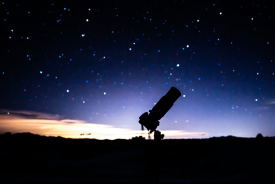The Arctic is contributing more carbon dioxide and methane to the atmosphere during the region's long, cold winters than previously thought.
According to The Washington Post, permafrost in the Arctic stores these greenhouse gasses and releases them when it thaws. A new study published in the journal Proceedings of the National Academy of Sciences examined methane emissions during the winter.
"This is extremely relevant for the Arctic ecosystem, as the zero curtain period continues from September until the end of December, lasting as long or longer than the entire summer season," study first author Donatella Zona, of San Diego State University and the University of Sheffield, said in a press release. "These results are opposite of what modelers have been assuming, which is that the majority of the methane emissions occur during the warm summer months while the cold-season methane contribution is nearly zero."
For their study, the researchers examined how permafrost in the Arctic emitted methane during the winter in five different regions between June 2013 and Jan. 2015. They decided to focus on focusing on the cold months because it was generally assumed to be a non-consequential amount.
"Donatella and her team are to be commended for making the first year-round measurements of [methane] in the Arctic," Stan Wullschleger, an environmental scientist at Oak Ridge National Laboratory, told The Post. "The fact that this was done not just at one site, but multiple sites, is a breakthrough in our ability to quantify [methane] budgets for tundra ecosystems."
© 2026 University Herald, All rights reserved. Do not reproduce without permission.








